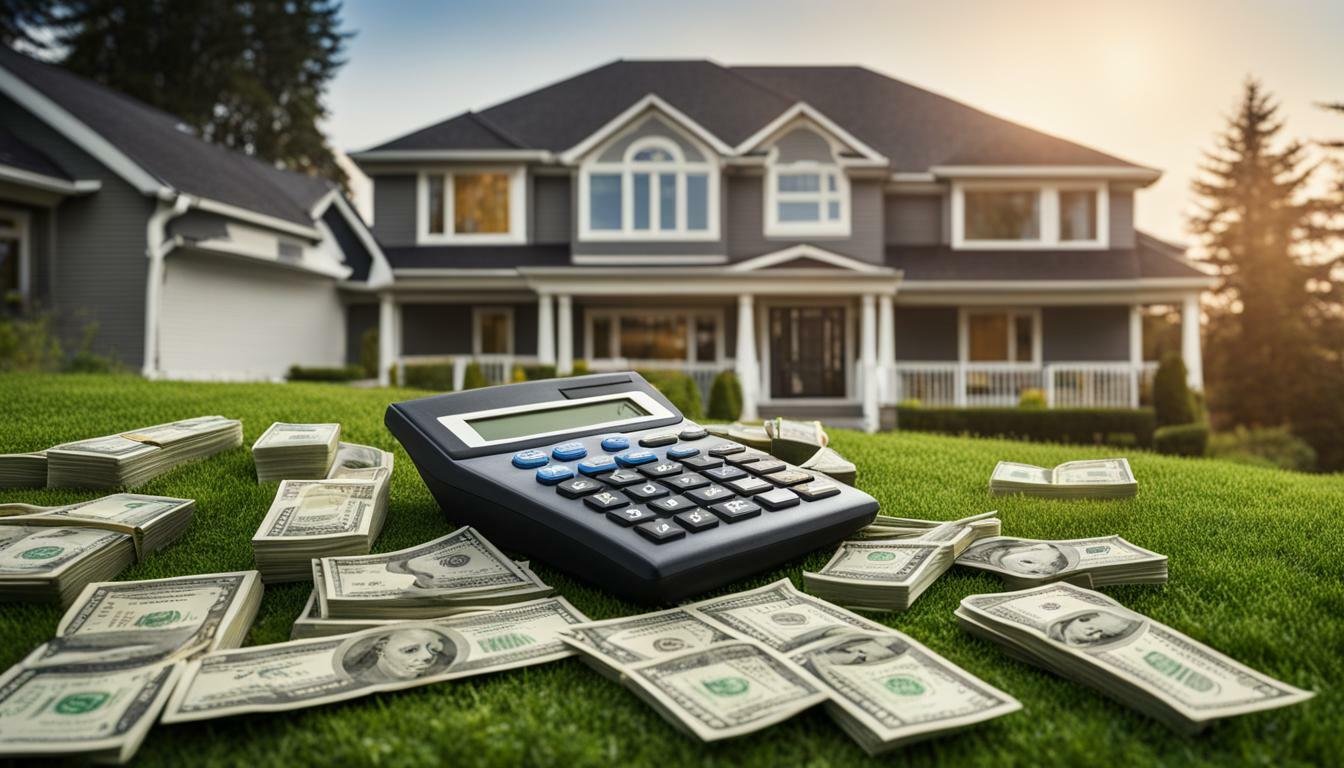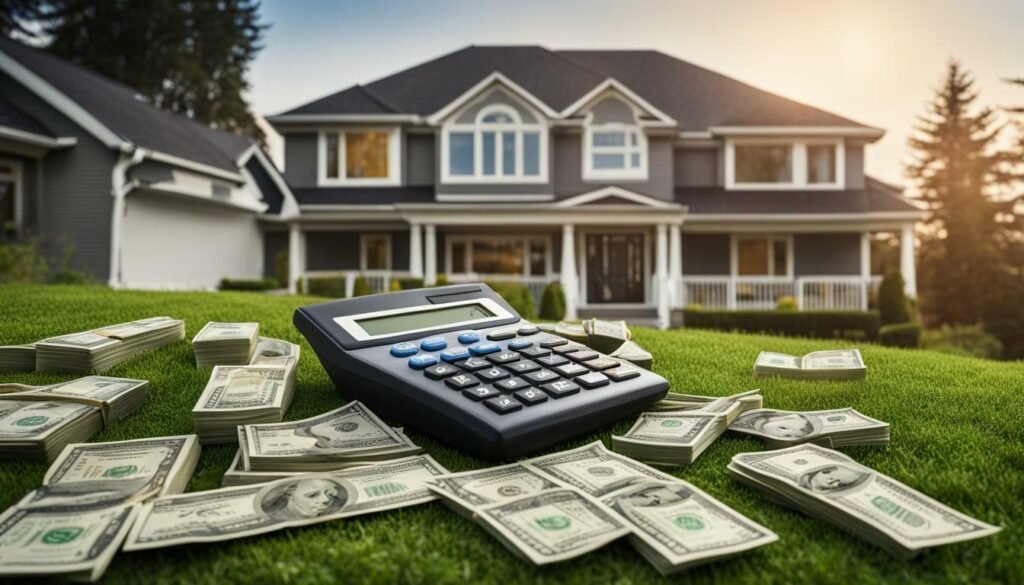 Real estate jargon can be overwhelming, especially if you’re new to property investments. One of the terms you may have come across is ARV, which stands for After Repair Value. But, what does ARV actually mean and how does it impact property investments? In this section, we will explore the meaning and significance of ARV in the context of real estate, using SEO relevant keywords such as ARV meaning, real estate jargon, and property investments.
Real estate jargon can be overwhelming, especially if you’re new to property investments. One of the terms you may have come across is ARV, which stands for After Repair Value. But, what does ARV actually mean and how does it impact property investments? In this section, we will explore the meaning and significance of ARV in the context of real estate, using SEO relevant keywords such as ARV meaning, real estate jargon, and property investments.
Contents
Defining ARV in Real Estate
ARV, or after repair value, is a term used in real estate to represent the estimated value of a property after it has undergone repairs, renovations, or improvements. It is a critical metric that helps investors assess the potential profitability of a real estate project.
The ARV calculation takes into account the current condition of the property, the cost of necessary repairs or upgrades, and the property’s location. By determining the projected value of the property after repairs have been made, investors can assess whether the investment is financially viable.
For instance, if a property is currently valued at $200,000 but requires $50,000 in repairs and upgrades, the ARV would be calculated at $300,000. This figure represents the potential value of the property after the repairs have been completed, and investors can use it to determine whether the investment is worthwhile.
ARV is essential in determining the value of a property, and it can help investors make informed decisions about their investments. By understanding the definition and calculation of ARV, investors can navigate the complexities of real estate investments more effectively.
Calculating ARV
Calculating ARV in real estate is a crucial process for property investors and industry professionals alike. ARV, which stands for After Repair Value, is the estimated value of a property after it has undergone repairs, renovations, or improvements. Accurately determining ARV is essential for assessing potential profitability and making informed investment decisions.
The calculation of ARV involves considering various factors that affect the property’s value. These factors include the property’s location, size, condition, and the extent of repairs or upgrades needed. It is essential to consider every aspect of the property, as these factors can significantly impact the property’s value and potential return on investment.
Location plays a significant role in determining ARV. Properties located in desirable neighborhoods or commercial areas typically have a higher ARV than properties in less popular areas. Similarly, the size of the property and its condition can significantly impact its value. A larger property that is in good condition may have a higher ARV than a smaller property that is in poor condition.
The extent of repairs or upgrades needed is also a crucial factor in calculating ARV. Properties that require significant repairs or upgrades will have a lower ARV than properties that do not require as much work. The cost of these repairs or upgrades should also be taken into account when calculating ARV, as this could impact the overall profitability of the investment.
In conclusion, calculating ARV in real estate involves a thorough analysis of various factors that impact the property’s value. Factors such as location, size, condition, and repairs or upgrades needed should all be considered when determining ARV. Understanding these calculations is crucial for accurately valuing a property and making informed investment decisions.
Importance of ARV in Property Investments
When it comes to property investments, understanding the After Repair Value (ARV) is crucial. ARV represents the estimated value of a property after it has undergone repairs, renovations, or improvements. By considering ARV, investors can assess the profitability of a property and determine the level of risk involved in a particular investment opportunity.
One significant advantage of understanding ARV is that it helps investors make informed decisions about whether a potential investment will yield a favorable return. By evaluating the property’s ARV, investors can decide if the investment is financially sound and worth the associated risks.
Moreover, ARV plays a crucial role in determining financing options for property investments. Lenders often consider ARV when evaluating loan applications for real estate investors. By presenting a realistic ARV estimate, investors increase their chances of securing suitable loans with favorable terms.
However, it is essential to note that calculating ARV is not foolproof and carries some risks. Factors such as market fluctuations, inaccurate property valuations, and unexpected repair costs can impact the final outcome. Therefore, investors and industry professionals should remain vigilant when calculating ARV and consider all associated risks.
Overall, understanding the significance of ARV in property investments is essential for making informed decisions and mitigating investment risks. By evaluating ARV, investors can assess the potential profitability of a property and navigate the complexities of property investments more effectively.
ARV and Financing
When it comes to financing a real estate investment project, lenders often consider the property’s ARV as a key factor in their decision-making process. This is because ARV can determine the potential profitability of the investment and the level of risk involved for the lender.
For investors, understanding how ARV affects financing options can help them secure the right type of loan for their project. ARV loans are tailored to provide financing based on the estimated value of the property after repairs or upgrades have been completed, rather than the current value. These types of loans allow investors to borrow more money and access financing that may not be available through traditional lenders.
However, it’s important for investors to remember that ARV loans can come with higher interest rates and more stringent requirements than traditional loans. Lenders may also require detailed information about the proposed repairs or upgrades, as well as the investor’s experience and track record in the real estate industry.
Despite these challenges, ARV loans can be a valuable tool for investors looking to finance a real estate project. By understanding the relationship between ARV and financing options, investors can make informed decisions and secure the right type of financing to meet their needs.
ARV Challenges and Risks
While ARV is a useful tool in real estate investment, it’s important to be aware of the challenges and risks involved in calculating and relying on it for decision-making.
One of the main challenges of ARV is accurately valuing a property. This can be especially difficult if the property is in poor condition and requires significant repairs or renovations. Without an accurate assessment of the property’s value, the ARV calculation will likely be incorrect, leading to inaccurate investment decisions.
Another risk associated with ARV is unexpected repair costs. Even with a thorough inspection, there is always a risk of unforeseen issues arising during the repair process. These additional costs can significantly affect the profitability of an investment and increase the level of risk involved.
Market fluctuations can also impact the accuracy of ARV calculations. If the market experiences a downturn, the estimated value of a property may be lower than expected, leading to a lower ARV calculation and potentially lower returns on investment.
Finally, ARV carries the risk of investment failure. Despite thorough planning and calculations, there is always a chance that a project may not yield the expected returns. This risk is inherent in any investment and underscores the importance of carefully considering all factors involved in a potential investment opportunity.
By understanding these challenges and risks, investors can make more informed decisions about their real estate projects and navigate the complexities of the market more effectively.
Conclusion
ARV plays a crucial role in real estate investments, providing investors with a clear understanding of a property’s potential profitability. By accurately calculating ARV, investors can make informed decisions about whether a property is worth investing in and determine the level of risk involved in a particular project.
However, it is important to be aware of the challenges and risks associated with ARV calculations. Inaccurate property valuations, unexpected repair costs, and market fluctuations can all impact the final ARV value, potentially leading to unforeseen losses for investors.
Despite these challenges, ARV remains an essential tool for real estate professionals seeking to maximize their investments and minimize risks. By staying up to date with current market trends and factors affecting ARV, investors can continue to make informed decisions and approach property investments with confidence.
Overall, understanding the meaning, calculation, and significance of ARV in real estate is vital for anyone looking to succeed in this competitive industry. By considering all relevant factors and making informed decisions, investors can navigate the complexities of property investments and achieve their financial goals.
FAQ
Q: What does ARV mean in real estate?
A: ARV stands for After Repair Value. It represents the estimated value of a property after it has undergone repairs, renovations, or improvements.
Q: How is ARV calculated?
A: ARV is calculated by considering various factors, such as the property’s location, size, condition, and the extent of repairs or upgrades needed. These calculations help determine the potential profitability of a real estate project.
Q: Why is ARV important in property investments?
A: ARV is crucial in property investments as it helps investors assess the potential profitability of a real estate project. By considering ARV, investors can make informed decisions about whether a potential investment will yield a favorable return.
Q: How does ARV affect financing options?
A: Lenders often consider ARV when evaluating loan applications for real estate investors. Understanding how ARV affects financing can help investors secure suitable loans for their property projects.
Q: What are some challenges and risks associated with ARV calculations?
A: Some challenges and risks associated with ARV calculations include inaccurate property valuations, unexpected repair costs, market fluctuations, and other potential risks that investors should be aware of.
- Can you become a millionaire by investing in real estate? - November 7, 2023
- What form of AI is most commonly used in real estate? - November 5, 2023
- What is the AI real estate market forecast? - November 3, 2023
